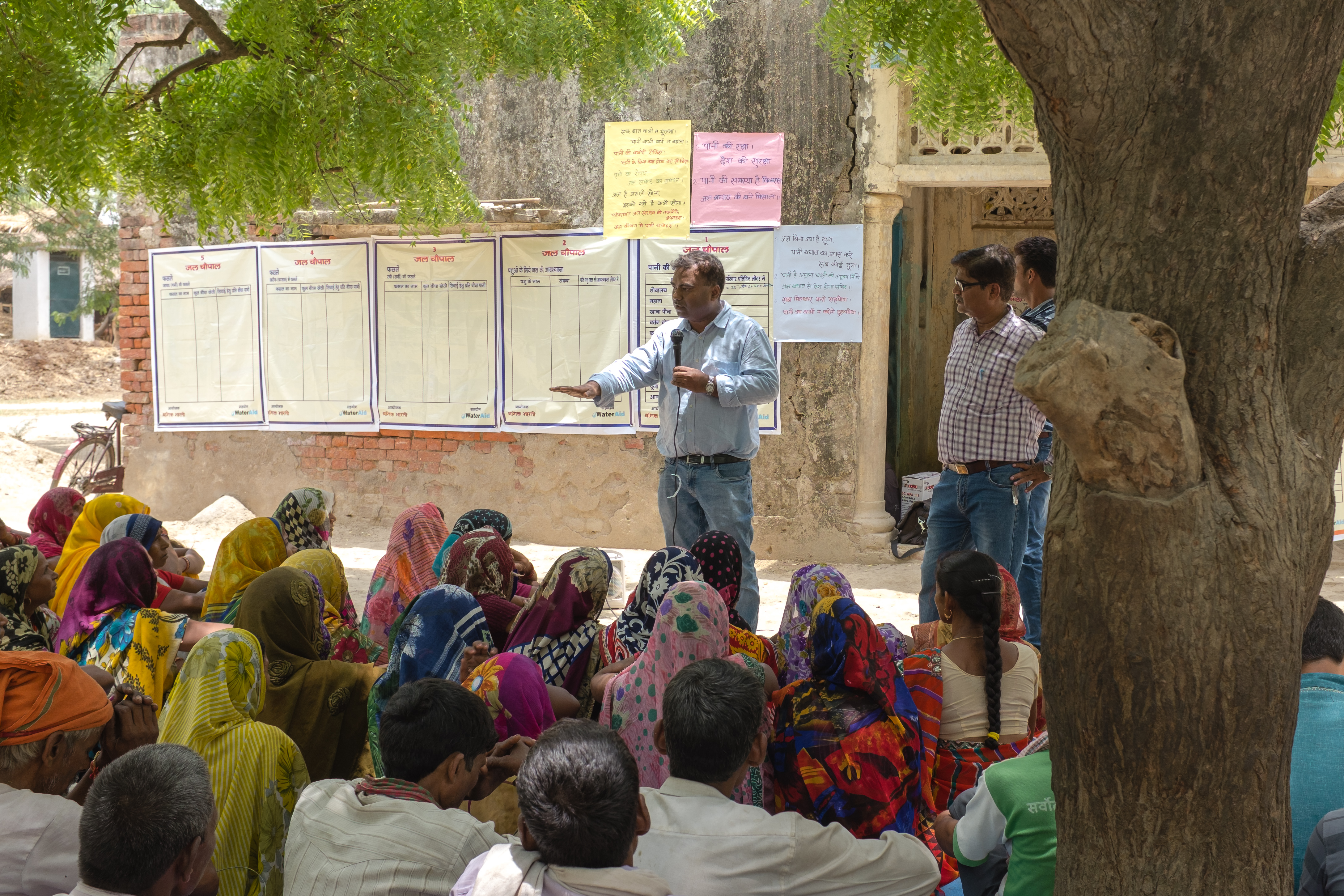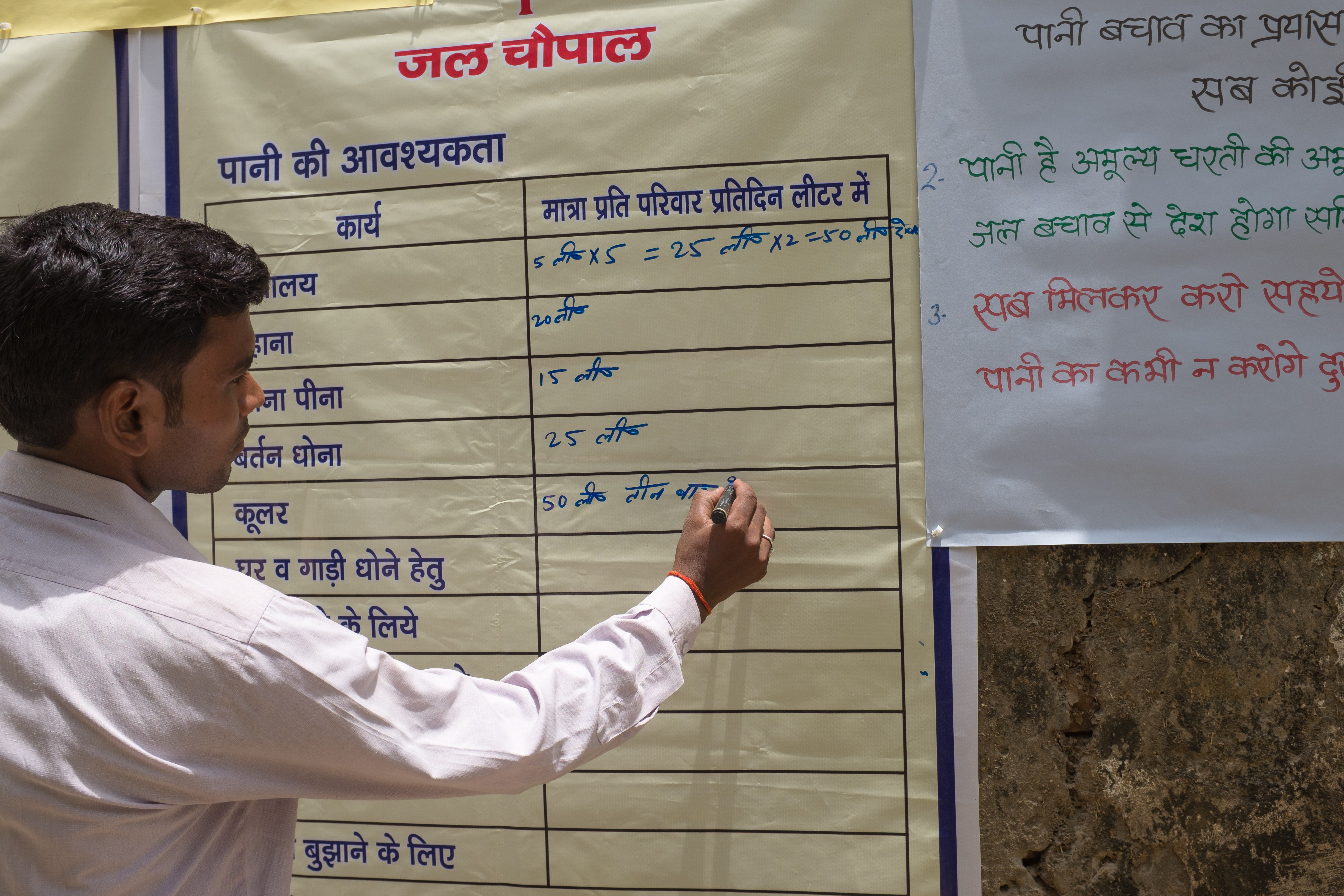A UP Initiative Is Helping Its Villagers Save & Conserve Water Through Problem Solving
Once this becomes a success, there are plans to initiate more Jal Chaupals to make people realise the importance of water conservation.

While most villages in India are yet to experience running water in their homes, Jal Chaupal – a people centric platform – aims to change what’s considered normal by helping villagers address water scarcity issues, together!
A mere 35 hand pumps cater to the water needs of almost 450 households and over 2000 residents in Kakupur Sitaram village in Kanpur, Uttar Pradesh (UP). Access to water for basic needs is an everyday struggle for these villagers. Ironically, river Ganga is in close proximity, yet Kakupur Sitaram suffers from water woes. The village is not alone in this struggle, there are many more that are struggling for access to water in Uttar Pradesh.
Although a lot has been done in the past to address water crises in villages like Kakupur Sitaram, yet there has emerged a strong need for a platform where the villagers could come together to discuss problems and seek solutions. Thus, Jal Chaupal came into being in the year 2016. With the primary focus on instilling ownership amongst the villagers, Jal Chaupal works ‘with the people, for the people, by the people’, to give them a voice.
“The idea of holding ‘Jal Chaupal’ at various levels came along, based on the intricacies of water democratisation in different states of India. The first Jal Chaupal was organised at the state level in UP, in collaboration with arsenic and fluoride network, which deliberated on water quality issues,” shared Puneet Srivastava, Manager – Policy, WaterAid India.

In the last one year, Jal Chaupal meetings have been taking place across three blocks of Kanpur and Fatehpur each. The villagers from all age groups come together and discuss the ways in which they can deal with the water problems prevailing in their respective villages.
“During a Jal Chaupal session, we identified a dirty pond in our village. It had enough water to be used for cleaning and irrigation purposes, but the quality of water was bad as there was algae formation all over it. Through the knowledge gathered in Jal Chaupal, we worked towards cleaning the pond. Today, the villagers are able to use it, and are discussing ways of recharging and cleaning other ponds as well.” -Manoj, an active Jal Chaupal member.

Primary modules of Jal Chaupal
Currently, Jal Chaupal at the village level is being organised in six Gram Panchayats of Kanpur and Fatehpur by WaterAid India, Shramik Bharti and INREM Foundation. Jal Chaupal concept is based on three primary modules, namely (i) gender and water, (ii) climate change and its impact on water security, and (iii) water budgeting. These are crucial parameters to understand water quality, its availability and accessibility. These modules aim to bring forth the water scenario, as described by the villagers themselves.
Based on these modules, key insights gathered from a Jal Chaupal meeting in Kakupur Sitaram village were:
Gender and water
Water is not ‘gender-neutral’. Women and men have unequal gender power and access to resources. The needs of women as domestic water managers are often ignored in large scale irrigation plans. During a Jal Chaupal session, it was gathered that a woman spends about three hours a day to collect water. Since they are dependent upon natural resources to a large extent, it is a matter of practical, cultural and ethical interest to them to conserve these natural resources.
Climate change and its impact on water security
The repercussions of climate change affect all. Some facts that came forward post this discussion were that there has been a decrease in rainfall over the last few years, and the ground water level has also depleted immensely. The farmers also shared how such changes affect their farmland in a great way. There is also an additional burden to walk farther to fetch water as most of the hand pumps go dry in peak summer season.
Water budgeting
‘Water budgeting’ is essential for every village. It refers to the estimation of availability of water in the respective Gram Panchayat from different water sources (groundwater, surface water and rainwater), and planning its use against the various purposes. Hence, Jal Chaupal helps villagers to understand the amount of water actually required by them, matching against the status of water availability. This has also helped in generating awareness about the importance of water conservation.

“During the Jal Chaupal sessions, we were informed about the ways in which we can store water. We are now making efforts to store rainwater on rooftops, clean drains, nearby ponds and bore-wells, to maintain the water level as well as use it for other purposes, such as farming, feeding animals, and so on.” -Krishn Mohan Singh, a 35 year old farmer.
As per the National Rural Drinking Water Programme (NRDWP), there is a provision to provide 40-55 litres per capita per day (lpcd) of water to each individual. However, an interesting fact that emerged out of these Jal Chaupal sessions was that the actual requirement of water by an individual is quite high. They also need potable water to feed animals, which is an additional burden that ultimately falls on the women and girls in the family.
Still a long way to go
The sustained and combined effort of villagers through Jal Chaupals are helping them to come up with solutions for ensuring easy access to water, yet there remain issues that need desperate attention. For example, the villages on the bank of river Ganga are solely dependent on groundwater, while the recent Jal Chaupal discussions have thrown light upon the deteriorating groundwater level. The villagers involved in farming have no other option but to use groundwater for irrigation, rather than investing in practices like rainwater harvesting, aquifers recharge and so on.

What also needs to be understood is the link between the flow of river Ganga and the deteriorating groundwater level. Villagers are still recommending installation of more and more hand pumps, without considering the fact that the water would come from the same groundwater, the level of which is already quite low. The lack of knowledge amongst the villagers on practices like rainwater harvesting is resulting in hardly any conservation of water.
The way forward
The positive impact seen is that within a year of initiating and implementing Jal Chaupals in the villages, the level of awareness is on the rise. This has manifested in many water conservation and rainwater harvesting measures finding place in MGNREGS (Mahatma Gandhi National Rural Employment Guarantee Scheme) plans of the Gram Panchayats. The villagers have become sensitive towards using water judiciously. While some young members of Jal Chaupal are leading the way to improve the water scenario intheir village, others are joining programmes like MGNREGS to initiate work on recharging the dying water sources.
WaterAid India, along with partners Shramik Bharti and INREM foundation, is advocating with the authorities at different levels to ensure water security in the six villages of Kanpur and Fatehpur. “In due course of time, Jal Chaupal has become a great platform to bring everyone together and talk about the existing water related issues and seek localised solutions. The idea of Jal Chaupal is now being integrated in villages of Bihar by the Public Health Engineering Department, Government of Bihar,” added Puneet.
Once this becomes a success, there are plans to initiate more and more Jal Chaupals to make people realise the importance of water conservation, plan for overall water security and understand the linkages with Ganga. Everything said and done, water is a limited resource and will finish unless we start using it judiciously!
Ishita Rampal is the Content Officer at WaterAid India.
To learn more or contribute, visit here.
Like this story? Or have something to share?
Write to us: [email protected]
Connect with us on Facebook and Twitter.
NEW: Click here to get positive news on WhatsApp!
If you found our stories insightful, informative, or even just enjoyable, we invite you to consider making a voluntary payment to support the work we do at The Better India. Your contribution helps us continue producing quality content that educates, inspires, and drives positive change.
Choose one of the payment options below for your contribution-
By paying for the stories you value, you directly contribute to sustaining our efforts focused on making a difference in the world. Together, let's ensure that impactful stories continue to be told and shared, enriching lives and communities alike.
Thank you for your support. Here are some frequently asked questions you might find helpful to know why you are contributing?


This story made me
-
97
-
121
-
89
-
167














